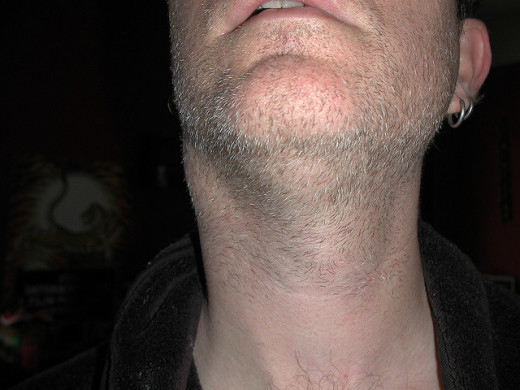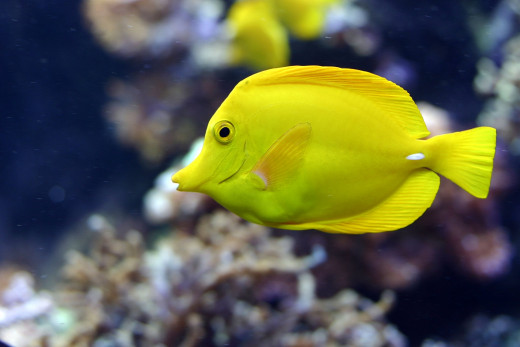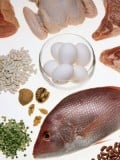Iodine, Fluorine, Copper And Zinc:Nutritive Significances, Deficiencies And Biological relevance As Mineral Supplements
Goiter In Iodine Deficiency

Iodine
Iodine is widespread in nature and it is obtained especially from sea water, salt, sea fish, vegetables, drinking water and milk. The daily requirement is about 150 to 250 ug. Calcium retards absorption of iodine. Iodine is concentrated by the thyroid gland for the formation of thyroid hormones. Through the diets of the majority of Africans for instance, supply is in adequate amounts of Iodine, so also in India. The Iodine content of diet and water is low over vast areas on the globe and iodine deficiency goiters are widespread. More than 400 million people are affected in Asia alone. In India, such goiter belts occur in the foothills of the Himalayas, several parts of North India and midlands and highlands of Kerata. In a place like Nigeria for instance, the far North experiences 98% of the few Goiter cases in the country. In man and animals, chronic iodine deficiency produces characteristic response a wide spectrum of Iodine deficiency disorders are seen.
The importance of widespread Iodine deficiency has been brought out by recent work. Several developmental disorders are prevalent among goiterous communities. These include retarded mental development, hearing defects, speech disorders, retarded growth and endemic cretinism which is directly proportional to the severity of Iodine deficiency. The thyrpoid stimulating hormone (TSH) level increases and the thyroid hypertrophies, and multinodula goiter develops. The gland traps more iodine. Iodine turnover is faster and urinary excretion falls. Goitrous cretinism is common in such areas. Supplementation of Iodine in these deficiency areas has led to the development of hyperthyroidism (Jod Basedow Phenomenon) in many. Prevention of iodine deficiency is achieved by fortification of common salt with potassium Iodid. This measure has served to reduced endemic goiter in the Hamalayan belt. Iodised oil suitable for oral used or intramuscular injection is being developed. A single injection will protect the individual against iodine deficiency for 3 to 5 years.
Sea Fish: A Source Of Fluorine

Fluorine
Flourine is present in small amounts in human bonesand teeth. Fluoride is obtained from drinking water, tea and sea Fish. Water sources are more important. Daily requirement is 1 to 2 mg. Fluoride is deposited in the enamel of developing teeth. Once the teeth are fully developed, fluoride is not further incorporated. Low levels of fluoride in drinking water are associated with higher prevalence of dental caries. In many countries, addition of 1 ppm fluoride to drinking water has served to reduce the incidence of dental caries on the other.
Copper And Zinc
Copper
Copper is widespread in all foods and hence dietary deficiency of copper is very rare. Copper is necessary for the proper formation of hemoglobin and several enzymes. Young children fed solely on mild formulas may develop copper deficiency. The main features include anemia, neutropenia, retardation of growth and rarefaction of bones.
Zinc
Zinc is present in many enzymes. Highest concentration occurs in the liver, voluntary muscle, bone, prostate and eyes. Foods such as meat, fish, peas, and cereals contain Zinc. Daily requirement is not clearly known, but is around 15 mg. Dietary deficiency is very rare. Zinc deficiency leads to impairment of maturation and immune-competence. In malnourished zinc deficiency thymic atrophy may result. A syndrome of dwarfism and hypogonadism seen in Egypt and Iran has been attributed to zinc deficiency. Oral zinc sulphate corrected this clinical picture. Acrodermatitis enteropathica is an inherited disorder resulting from the malabsorption of zinc, probably due to an enzymatic defect. Administration of zinc sulphate 30 to 50 mg/day results in complete remission. Oral zinc sulphate, 100 mg.day has been found to stimulate the growth of granulation tissue in chronic ulcers.
Dwarf Soccer

© 2014 Funom Theophilus Makama








